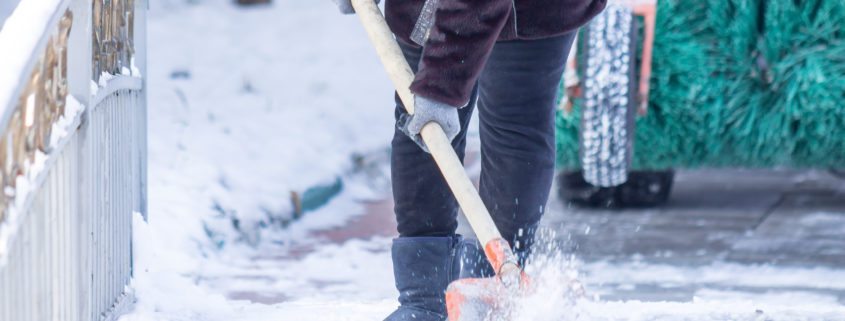Snow Shoveling: Tips for Avoiding Back Pain this Winter
Winter is upon us, and, like it or not, winter means snow—and consequently, snow shoveling—here in Central Indiana.
Did you know that shoveling snow is a frequent cause of injury, causing thousands of back and shoulder injuries each year? Below are a few tips on how you can be safer this winter and take precautions to avoid injury while shoveling.
☞ Stretch first. Snow shoveling can be compared to weight lifting, and the aerobic aspect of this activity is similar to the workout one gets on a treadmill. Tight muscles are more prone to injury; thus, as with any exercise, it is important to first stretch your muscles before heading out to the driveway.
☞ Wear proper attire. Being cold will tighten up your muscles and leave you vulnerable to painful muscle strains. Therefore, wear warm layers that you can shed should you become too hot. Thick gloves will keep your hands warm and dry and will also allow for a good grip on the shovel’s handle. And boots with good traction will help you maintain your balance, preventing unfortunate slips and falls.
☞ Pace yourself. Snow shoveling is strenuous work. Be sure to take frequent breaks to rest, stretch, and drink plenty of water. If you experience pain of any kind, stop immediately and seek assistance.
☞ Create better traction. If the ground is icy or slick, spread sand or salt over the area to help create foot traction. While shoveling itself can cause damage to the back if done incorrectly, slipping and falling can also obviously cause injury; therefore, it is important to watch your footing and do your best to prevent falls in the first place.
☞ Choose the right shovel. Using an ergonomically correct shovel—one with a curved handle—allows you to keep your back straighter while shoveling, thus reducing spinal stress. Choosing a shovel made to push snow is also a good option. Consider using a shovel with a plastic blade, which will be lighter weight than one with a metal blade. Finally, a smaller blade may be preferable over a wider one. You will not be able to shovel as much snow per load, but the loads will weigh less, putting less strain on your spine with each pass.
☞ Use proper technique. Use good posture and maintain the natural curve of your spine while shoveling. Keep the shovel close to your body, and create some distance between your hands while gripping the handle. This will give you more leverage and make it easier to lift the snow. Lift with your legs—not your back—and tighten your stomach muscles as you lift. Don’t throw the snow over your shoulder or twist your body while dumping snow; instead, dump it in front of you. If you must dump it in another spot, walk over, as opposed to leaning over or throwing the snow. Rotating or twisting your body, especially with a shovelful of heavy snow, can be an easy way to injure your back.
☞ Shovel early, shovel often. Snow becomes more dense as it compacts on the ground, and wet snow is very heavy, weighing as much as 20 pounds per shovelful! Fresh snow is lighter in weight, so clear snow as soon as it has fallen. As snow continues to fall, you may find yourself outside several times, but it is much easier to clear fresh, lighter snow than dense, heavy, wet snow.
☞ Consider a snowblower. If shoveling is too strenuous for you, using a snowblower can be a good option. However, if not used correctly, it can still cause back strain. Snowblowers are designed to remove snow at a particular rate of speed, so pushing or forcing the equipment to go faster defeats the purpose—and puts you at risk of injury.
Overall, the best thing to do while shoveling snow is to use common sense. Stop shoveling if you feel any pain at all, and don’t feel you have to tackle the whole job all at one time. If you are out of shape or have had back injuries in the past, it is best to check with your doctor before shoveling. (Or, better yet, consider hiring the job out!)



